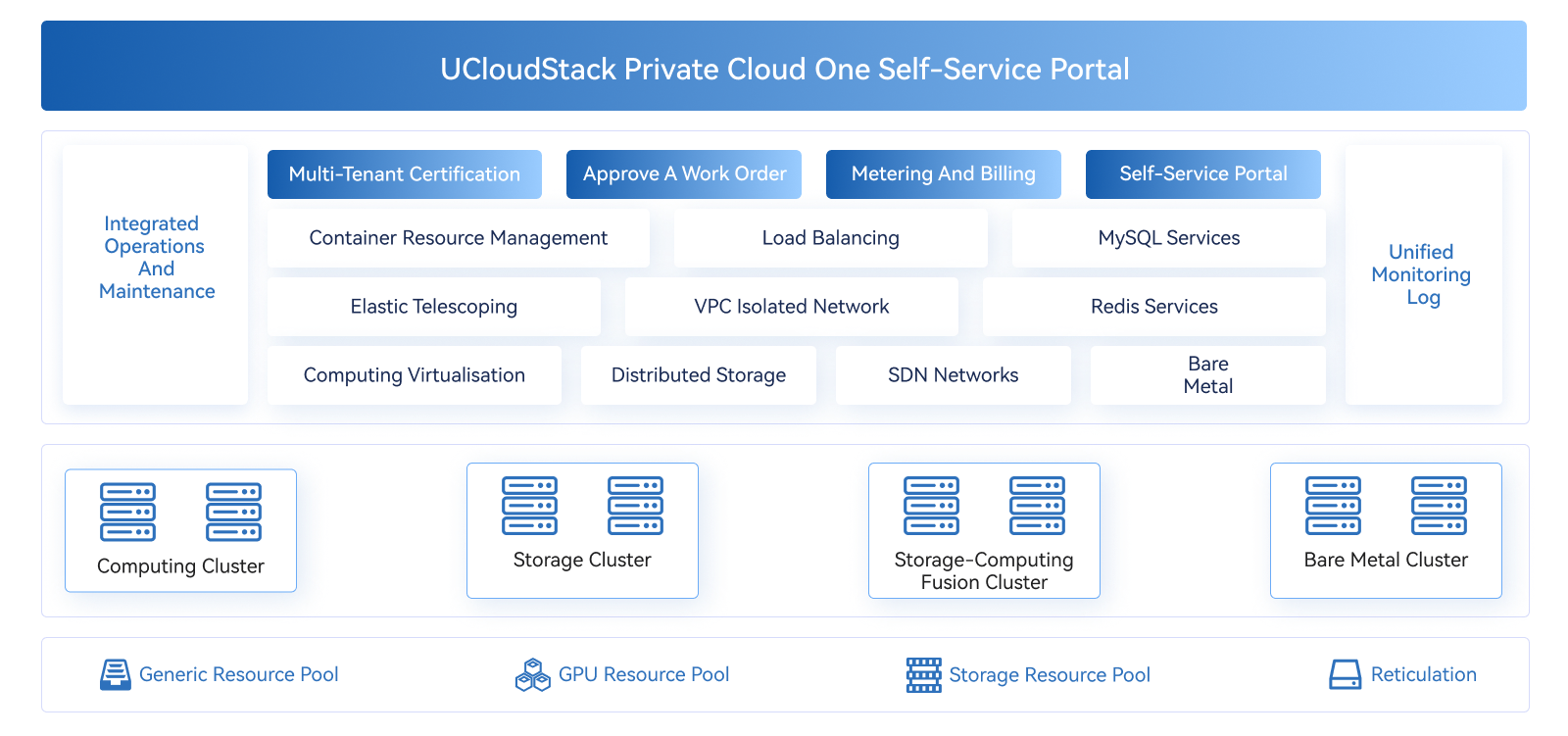Business challenge
Technical complexity
The cloud infrastructure needs to introduce a variety of new technologies, needs to face the challenge of solution selection and integration, and at the same time, the architecture transformation is also facing the risk of platform stability decline
Input cost
Building a complete cloud infrastructure requires the purchase of a large amount of hardware and software, which makes the initial investment large, while the later investment in continuous operations is difficult to predict
Safety compliance
The change of the architecture may lead to the failure of the original security mechanism. How to meet the security and compliance requirements of the enterprise in the cloud computing architecture is one of the key issues to be considered during the architecture upgrade process
Solution architecture

Scheme characteristics
Stable and reliable
Reusing UCloud public cloud core components, more than 10 years of stable operation, to ensure business online
Safety compliance
Provides unified access control, resource isolation, and enterprise-owned secure cloud components that meet confidentiality assessment requirements
Flexible architecture
Small and medium-sized storage and computing converged deployment, support smooth transition to storage and computing separation architecture, support large-scale distributed cloud construction
Light starting weight
Highly integrated mainstream technology, 3 nodes to build a complete private cloud, protect the initial investment, on-demand expansion
Autonomous and controllable
The self-developed rate of cloud platform core code exceeds 96%, providing users with code-level support capability
Continuous evolution
Deep integration of IaaS capabilities, on-demand expansion of load balancing, elastic scaling, database, container management, big data and other advanced capabilities
Scheme value
Reduce complexity
Unified IT infrastructure management, automated operation and maintenance tools, and standardized technology stack reduce technical complexity, simplify system integration and management, reduce human operation errors, and improve system stability and maintainability
Increase efficiency
Provides a self-service cloud service portal, integrates common middleware and PaaS components such as load balancing, NAT gateway, database, and container, further lowering the threshold of application layer usage and improving management efficiency
Resource quantification
Provide accurate quantification of resource capabilities to help enterprises clearly understand resource consumption, optimize cost management, and improve resource utilization efficiency to achieve efficient operations
Enabling user
Cloud capabilities such as multi-tenant and service catalog support the transformation of an enterprise's operation and maintenance team from a cost center to an operation center, help users to provide public cloud services externally, and empower the digital transformation of the enterprise

